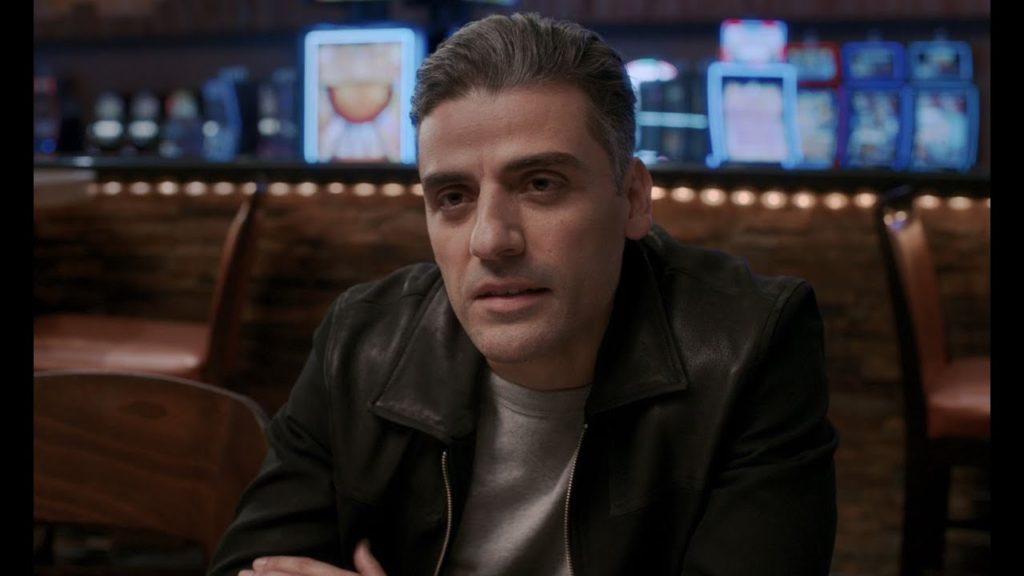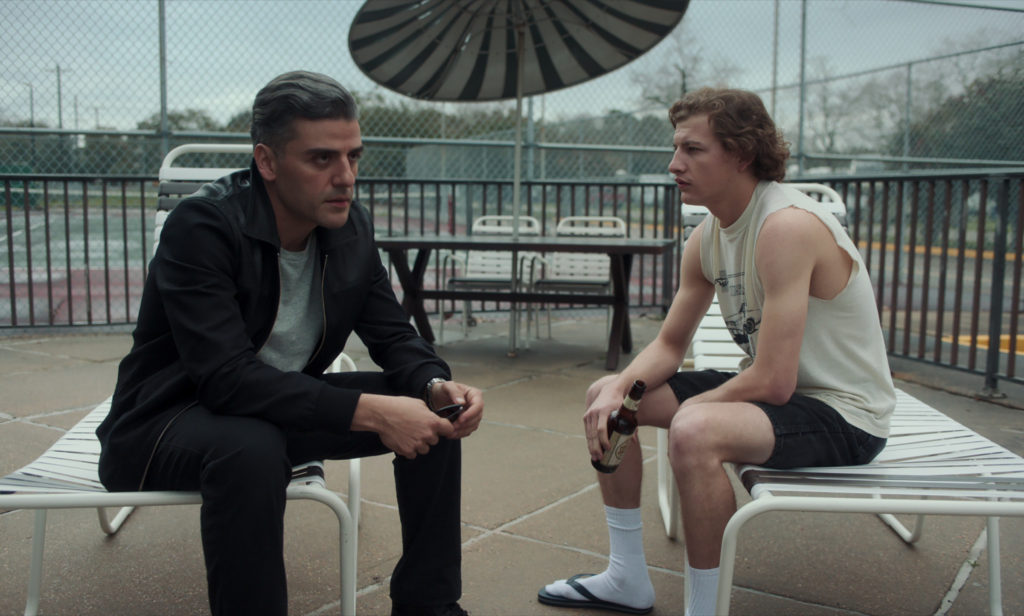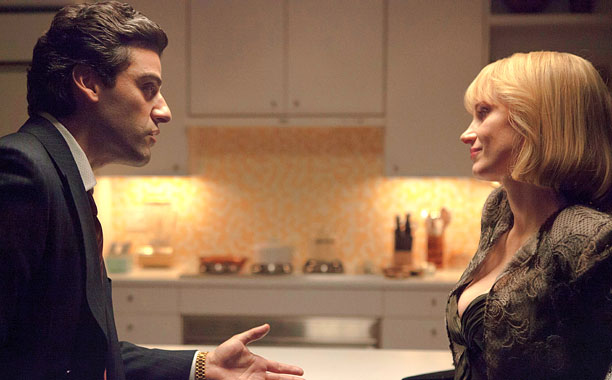
Oscar Isaac stars in Card Counter, Paul Schrader’s dark portrait of a highly disciplined loner who lives by a code but can’t submerge his past. Isaac’s character, improbably named William Tell, is a professional gambler, who lives in an endless string of motels and casinos.
The first thing we learn about William Tell is his rigid sense of self-discipline – in an OCD display of entering a new motel room and covering each piece of furniture in twine-bound sheets. This is an expert who can win free money at casinos, but resists winning too much, so he doesn’t get kicked out. He prefers anonymity to acclaim. More than anything, William Tell invests in keeping his head down.
It turns out that Tell has been traumatized by things he did as an army guard at Abu Ghraib – and the consequences. It’s no surprised that yet another solitary, emotionally damaged character has sprung from the dark mind of Paul Schrader (Taxi Driver, First Reformed).

Above all, Tell is a man with a code. He meets a young man (Tye Sheridan), also haunted by the aftereffect of Abu Ghraib, who is consumed by a revenge fantasy. Although Tell avoids social entanglements, he is compelled to save the kid from himself.
Although most of The Card Counter takes place in casinos, it’s really not gambling movie. There is some card play and some gaming procedure. This is a character-driven story – and it’s not about who wins or how much. Schrader playfully hints at a big poker showdown, but it’s a red herring.
The role of this intense and obsessive man is perfect for Oscar Isaac and his piercing gaze. I usually don’t warm to Isaac, although he has been proficient in some films that I love: Ex Machina, The Two Faces of January. Maybe I don’t see a sense of humor in there? Anyway, he is stellar here.
Tye Sheridan is excellent as the young man bent on revenge. Tiffany Haddish plays a woman who runs a stable of professional gamblers and lives off her emotional intelligence; it’s a delight every time she is on-screen. The great Willem Dafoe appears in a brief but pivotal role.
I haven’t ever seen a movie character like William Tell, which makes The Card Counter an excellent watch.

